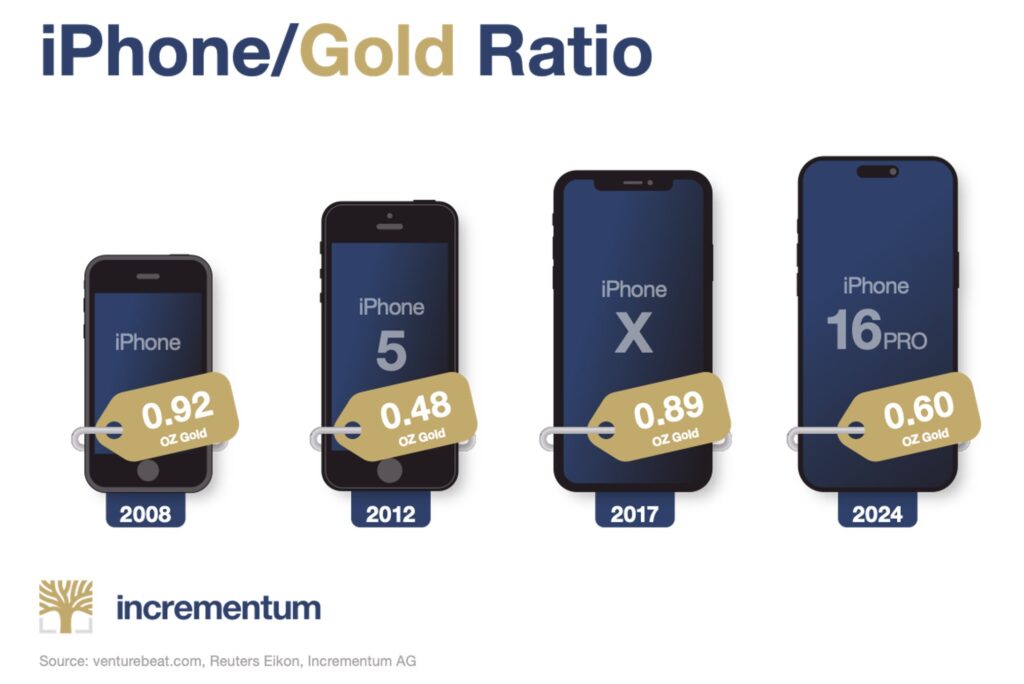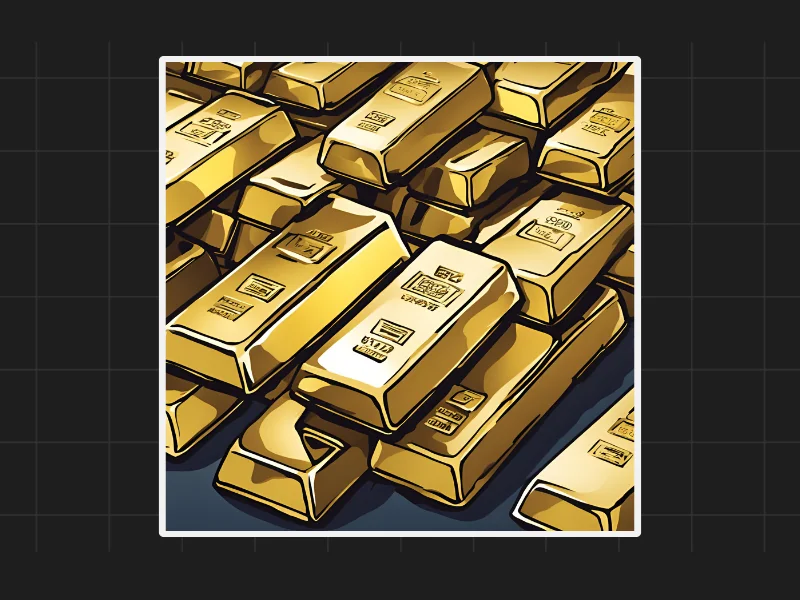The Value of Gold as an Inflation Protector
Gold has always been a reliable asset for protecting against inflation. A fascinating comparison shows this by looking at the price of iPhones over the years. In 2008, when the original iPhone was launched, it cost 0.92 ounces of gold. Fast forward to 2024, and the iPhone 16 Pro is priced at 0.6 ounces of gold. Despite the rise in the iPhone’s price in regular currency, its cost in terms of gold has remained stable between 0.5 and 1 ounce over 16 years.

Gold’s Consistent Purchasing Power
This example with the iPhone reveals how gold maintains its purchasing power over time, regardless of the technological advancements or inflation affecting regular currencies. While the technology in smartphones has greatly improved over the years, the price of gold has held steady when compared to these evolving products. This trend shows that gold consistently protects your wealth in the long run, especially during times when inflation erodes the value of paper money.
Gold vs. Equities: Different Purposes
One common mistake many people make is comparing gold to equities, expecting similar returns. However, the two asset classes serve entirely different purposes. While equities tend to outperform gold in terms of returns, gold offers protection. Gold is often viewed as a safe haven during market downturns, acting as a form of insurance for your investment portfolio. So, while stocks may give you higher returns, gold ensures that your wealth remains intact even during economic crises.
Gold Offers Stability and Returns
Another advantage of gold is that it provides returns while acting as an inflation hedge. For instance, in India, gold has given returns of about 11% to 12% over the past 50 years. While equities might outperform gold in the long term with higher returns, gold still offers a decent yield while protecting your investments from market volatility. Having a balanced asset allocation that includes gold can secure your overall portfolio, providing both protection and returns.
Gold’s Value Through Generations
An interesting observation about gold’s value is its consistency when compared to everyday expenses. For instance, my father used to talk about how a dinner plate at a five-star hotel in Delhi has consistently cost about 1 gram of gold over the decades. In 1980, the price of a dinner plate was around Rs. 20, which was equivalent to 1 gram of gold. In 2024, that same dinner plate costs about Rs. 7,000, still equivalent to roughly 1 gram of gold. This anecdote underscores gold’s long-term ability to preserve wealth against inflation.
Gold’s Role in Asset Allocation
While gold may not deliver the same returns as equities, its role in a diversified portfolio is vital. By protecting your investments against inflation and providing a steady return, gold plays a crucial part in balancing risk. Allocating 20% to 40% of your portfolio to gold can help protect the remaining assets and ensure stability in uncertain times. It may not make you rich like equities, but it will safeguard your wealth, which is the primary purpose of gold.
Disclaimers and disclosures : https://tinyurl.com/2763eyaz
If you have any questions, please write to support@weekendinvesting.com













